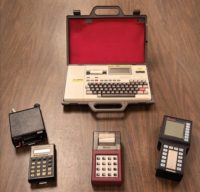Disruption
Fad or revolution?

Disruption seems to be a very popular term in the media recently. Traditionally, something described as disruptive has a negative connotation. However, this new definition can be viewed as positive, depending on whether you believe in the status quo or not.
In 1995, Clayton M. Christensen and colleagues in the business world coined and began using the term “disruptive innovation” to describe the creation of new markets and networks through innovations that would “eventually disrupt an existing market and network, displacing established market-leading firms, products, and alliances.”
Lately it seems that every outsider, entrepreneur, or start-up company is described this way. In real estate, for example, the onset of virtual reality technology, automated mortgages and appraisal models and websites like Zillow were all destined to change the way we buy and sell a house. While decades after the launch of Zillow it is true that some 90% of home shoppers start their search on the internet, many real estate experts say they have not seen a disruption in the way people buy and sell their homes. Few, if any, consumers buy a home strictly online, sight unseen. The traditional process is still alive and well, with consumers needing to visit a property, have it inspected, apply for a mortgage, and prepare all of the legal documentation that goes into purchasing a home.
Back in the 2002 season, the Oakland A’s made a historic run for major league baseball’s pennant, winning 103 games that season using a unique approach to building and fielding a winning team, Sabermetrics—the use and analysis of performance statistics. When the team fell short in the playoffs that year, the baseball pundits dismissed the experiment as a horrendous mistake, but today every team uses some form of Sabermetrics in its operations.
The landscape of history is littered with a host of examples like this of innovations that were dismissed as fads that wound up being revolutionary, changing the very way we live our lives, innovations that it would be difficult to imagine life without.
The first automobiles were dismissed as expensive luxury items that would not replace horse-drawn vehicles as the dominant mode of transportation. However, less than a decade later, the introduction of the mass-produced, low-cost Ford Model T began the revolution of the car as the single-most prevalent mode of transportation today. Similarly, in 1949, the computer was thought of as a tool only to be owned by businesses due to their expense and size, that is, until the “personal computer” revolution roughly 30 years later.
Even television was dismissed as a fad that would never catch on. And before it was available and offered to the masses, it was difficult for many to see the benefits and proliferation of the internet.
The next disruption is already in full swing in manufacturing. Just about everyone is preparing for the Industrial Internet of Things, or Industry 4.0, in anticipation of it being not just a fad, but the next revolution.
Find out the latest with “From Paper and Pencil to Industry 4.0: Revealing the Value of Data through Quality Intelligence,” in this month’s Quality.
Enjoy and thanks for reading!
Looking for a reprint of this article?
From high-res PDFs to custom plaques, order your copy today!






